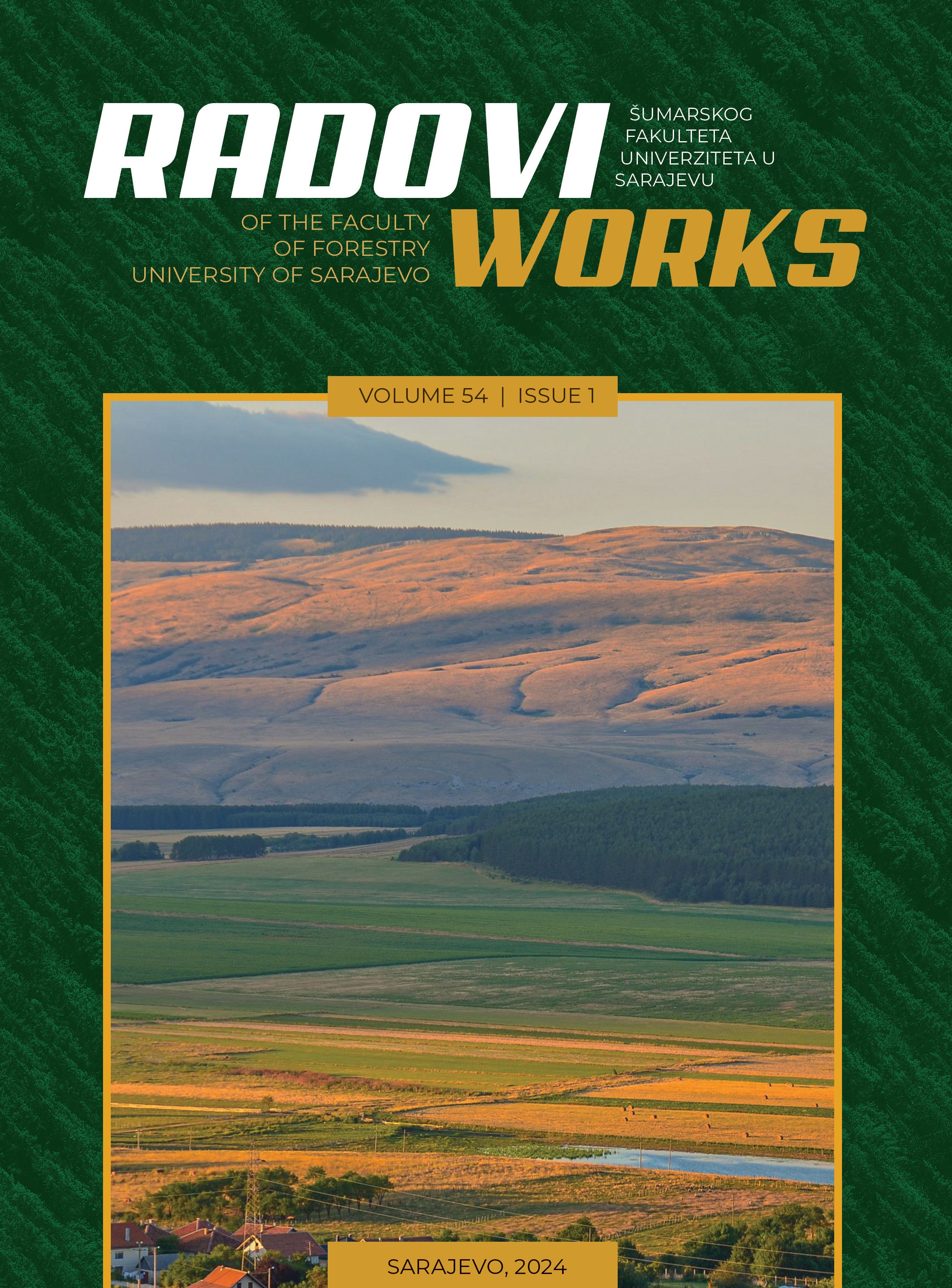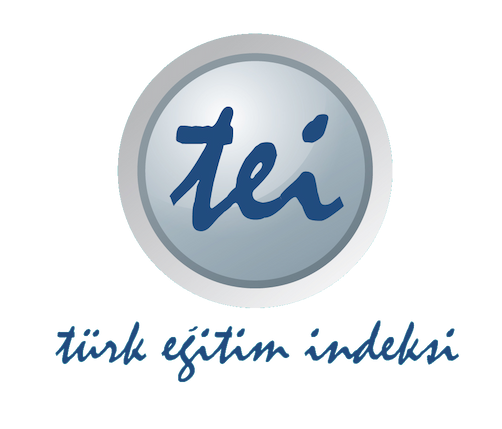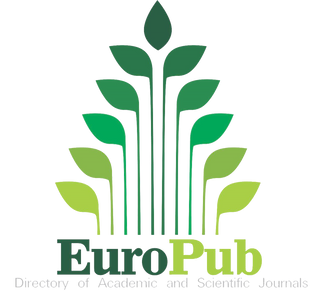Medonosni potencijal dendroflore u Bosni i Hercegovini
DOI:
https://doi.org/10.54652/rsf.2024.v54.i1.583Ključne riječi:
Melissopalynology, honey, pollen, woody apifloraSažetak
The floristic composition and ecological characteristics of the area where honey grazing is carried out directly define the botanical origin as well as the physical and chemical properties of honey. The goal of this research was to determine the potential of woody and shrubby plant species in the apiflora from Bosnia and Herzegovina (B&H) based on the qualitative-quantitative palynological analysis of honey samples. In the research, 100 different types of honey samples from B&H were collected and analyzed. The melissopalinological preparations were prepared and analyzed in accordance with the Rulebook on methods for the control of honey and other bee products of B&H, as well as the methods proposed by ICBB. After the melissopalinological analysis, 25 plant families with a total of 30,000 pollen grains were identified, of which 16 were woody or shrubby plants with 18,126 pollen grains in the preparations. In the research, the most presented honey-bearing woody plants were: black locust (Robinia pseudoacacia), chestnut (Castanea sativa) and linden (Tilia sp.). Each analyzed palynological profile represented a unique combination of pollen from honey-bearing plants, as a specific biological imprint of the place of honey grazing.
Downloads
References
Alibabić, V., Oraščanin, M., Vahčić N. (2017). Geographical origin of honey from eight sub-regions of Bosnia and Herzegovina. Czech Journal of Food Sciences, 35, 488-495.
Alissandrakis, E., Petros, A., Tarantilis, P.A., Pappas, C., Harizanis, P.S., Moshos olissiou, M. (2011). Investigation of organic extractives from unifloral chestnut (Castanea sativa L.) and eucalyptus (Eucalyptus globulus Labill.) honeys and flowers to identificationof botanical marker compound. LWT - Food Science and Technology, 44(4), 1042-1051.
Altay, V., Karahan, P., Karahan, F., Öztürk, M. (2018). Pollen analysis of honeys from Hatay/Turkey. Biological Diversity and Conservation, 11(3), 209-222.
Argoti, A. G. (2016). Abejas asociadas a los arboles de Linden (Tilia spp.) y sus susceptibilidad a azucares toxicos presentes en el nectar. Master degree dissertation. University of Oregon.
Atanassova, J. R., Yurukova L. D., Lazarova A. M. (2009). Palynological, physical, and chemical data on honey from the Kazanlak region (Central Bulgaria). Phytologia Balcanica, 15(1), 107-114.
Avşar, C., Özler, H., Berber, I., Civek, S. (2016). Phenolic composition, antimicrobial and antioxidant activity of Castanea sativa Mill. pollen grains from the Black Sea region of Turkey. International Food Research Journal, 23(4), 1711-1716.
Ball, D. W. (2007). The Chemical Composition of Honey. Journal of Chemical Education, 84 (10), 1643-1646.
Baracchi, D., Brown, M. J. F., Chittka, L. (2015). Weak and contradictory effects of selfmedication with nectar nicotine by parasitized bumblebees. F1000Research, 4, 73.
Bodó, A., Radványi, L., Kőszegi, T., Csepregi, R., Nagy, D.U., Farkas, Á., Kocsis, M. (2021). Quality Evaluation of Light‐ and Dark‐Colored Hungarian Honeys, Focusing on Botanical Origin, Antioxidant Capacity and Mineral Content. Molecules, 26, 2825.
Bogdanov, S. (2012). Pollen: Collection, Harvest, Composition, Quality. The Pollen Book, Bee Product Science, Chapter 1.
Boškailo A., Ademović, E., Mašić E., Šabanović E. (2017). Invazivna flora šire okoline grada Stoca. Educa, 10, 15-22.
Britvec, M., Ljubičić, I., Šimunić, R. (2013). Medonosno bilje kamenjarskih pašnjaka otoka Krka, Cresa i Paga. Agronomski glasnik I, 31 – 42.
Campos, G. R. M., Bogdanov, S., Bicudo de Almeida-Muradian, L., Szczesna, T., Mancebo, Y., Frigerio, C., Ferreira, F. (2008). Pollen composition and standardisation of analytical methods. Journal of Apicultural Research and Bee World, 47(2), 156–163.
Celebioglu, H. U., Erden, Y., Ozel, H. B. (2021). In vitro cytotoxic effects of lactobacilli grown with lime honey on human breast and colon cancer cells. Food Bioscience, 41.
Ćetković, G., Čanadanović-Brunet, J., Vulić, J., Djilas, S., Tumbas Šaponjac, V. (2014). Antioxidant and sensorial properties of linden honey with dried apricots. Chem Biodivers. 11(11), 1861-70.
Chiş, A. & Purcarea, C. (2011). Physico–Chemical Caracterisation of Artisanal Lime Honey from Bihor County. Natural resources and sustainable development, 1, 81-88.
De Marco, A., Napoletano, P., Panico, S. C., Memoli, V., Santorufo, L., Ruggiero, A. G., Colombo C., Barile R., Maisto G. (2023). Combined effect of black locust invasion and fire on soils of Mediterranean shrublands and pine forests. Catena, 220A, 106656.
Denžić Lugomer, M., Pavliček D., Kiš M., Končurat, A., Majnarić, D. (2017). Quality assessment of different types of Croatian honey between 2012 and 2016. Veterinarska stanica 48 (2).
Diniz Frias, B. E., Barbosa, C. D., Lourenço, A. P. (2016). Pollen nutrition in honey bees (Apis mellifera): impact on adult health. Apidologie, 47(1), 15-25.
Đug, S., Drešković, N., Trožić Borovac, S., Škrijelj, R., Muratović, E., Dautbašić, M., Bašić, N., Korjenić, E., Mujezinović, O., Lukić Bilela, L., Šoljan, D., Trakić, S., Vesnić, A., Šljuka, S., Hrelja, E., Mušović, A., Boškailo, A., Banda, A., Kulijer, D., Hadžić, E. (2019). Inventarizacija i geografska interpretacije invazivnih vrsta u Federaciji Bosne i Hercegovine. Sarajevo: Prirodno-matematički fakultet.
Dujmović Purgar, D. & Hulina, N. (2007). The honey plants of Plešivica hills (NW Croatia). Agronomski glasnik, 69(1), 3-22.
EPPO (2023). EPPO Global Database (available online). https://gd.eppo.int
Erdtman, G. (1943). An introduction to pollen analysis. Waltham, Mass., U.S.A.: Chronica Botanica Company.
Erdtman, G. (1952). Pollen morphology and plant taxonomy angiosperms. Waltham, Mass., U.S.A.: Chronica Botanica Company.
European Commission DG Agriculture and Rural Development (2013). Evaluation of measures for the apiculture sector. Final Report. (Retrieved from: https://cdn.netletter.at/imkerbund/media/download/2016.11.09/1478717245196241.pdf?d=Vollversion_Bewertung_der_Ma%C3%9Fnahmen_f%C3%BCr_die_Imkerei_in_Europa.pdf&dc=1478717297)Frezza, C., Venditti, A., Serafini, M., Bianco, A. (2019). Phytochemistry, chemotaxonomy, ethnopharmacology, and nutraceutics of Lamiaceae. In A.U, Rahman (Ed.). Studies in natural products chemistry, London/New York: Elsevier Applied Science.
Gašić, U., Šikoparija, B., Tosti, T., Trifković, J., Milojković-Opsenica, D., Natić, M., Tešić, Ž. (2014). Phytochemical Fingerprints of Lime Honey Collected in Serbia. Journal of AOAC International, 97(5), 1259-1267.
Gómez-Aparicio, L. & Canham, C. D. (2008). Neighbourhood analyses of the allelopathic effects of the invasive tree Ailanthus altissima in temperate forests. Journal of Ecology, 96(3), 447-458.
Güneş, M. E. (2021). Chestnut Honey as a Complementary Medicine: Determination of Antibacterial Activity, Heavy Metal Residue and Health Risk Assessment. Journal of Advances in VetBio Science and Techniques, 6(2), 82-89. https://doi.org/10.31797/vetbio.931144
Hesse, M., Halbritter, H., Zetter, R., Weber, M., Büchner, R., Frosch-Radivo, A., Ulrich, S. (2009). Pollen Terminology An illustrated handbook. Wien, New York: Springer.
Horčinová Sedláčková, V., Grygorieva, O., Fatrcová Šramková, K., Shelepova, O., Goncharovska, I., Mňahončáková, E. (2021). The chemical composition of pollen, staminate catkins, and honey of Castanea sativa Mill. Potravinarstvo Slovak Journal of Food Sciences, 15, 433-444.
Ion, N., Odoux, J. F., Vaissière, B. (2018). Melliferous potential of weedy herbaceous plants in crop fields of Romania from 1949 to 2012. Journal of Apicultural Science, 62(2), 149-165.
Jacquemart, AL., Moquet, L., Ouvrard, P., Quetin-Leclercq J., Hérent M.F., Quinet, M. (2018). Tilia trees: toxic or valuable resources for pollinators? Apidologie, 49, 538-550.
Kačániová, M., Galovičová, L., Valková, V., Ďuranová, H., Borotová, P., Štefániková, J., Vukovic, L. N., Vukic, M., Kunová, S., Felsöciová, S., Miklášová, K., Savitskaya, T., Grinshpan, D. (2021). Chemical composition and biological activity of Salvia offi cinalis essential oil. Acta Horticulturae et Regiotecturae, 24(2), 81–88.
Lazarević, B. K., Andrić, F, Trifković, J., Tešić, Ž., Milojković-Opsenica, D. (2012). Characterisation of Serbian unifloral honeys according to their physicochemical parameters. Food Chemistry 132, 2060–2064.
Lazzaro, L., Bolpagni, R., Buffa, G., Gentili, R., Lonati, M., Stinca, A., Rosario Acosta, A.T., Adorni, M., Aleffi, M., Allegrezza, M., Angiolini, C., Assini, S., Bagella, S., Bonari, G., Bovio, M., Bracco, F., Brundu, G., Caccianiga, M., Carnevali, L., Di Cecco, V., Ceschin, S., Ciaschetti, G., Cogoni, A., Foggi, B., Frattaroli, A.R., Genovesi, P., Gigante, D., Lucchese, F., Mainetti, A., Mariotti, M., Minissale, P., Paura, B., Pellizzari, M., Perrino, E.V., Pirone, G., Poggio, L., Poldini, L., Poponessi, S., Prisco, I., Prosser, F., Puglisi, M., Rosati, L., Selvaggi, A., Sottovia, L., Spampinato, G., Stanisci, A., Venanzoni, R., Viciani, D., Vidali, M., Villani, M., Lastrucci, L. (2020). Impact of invasive alien plants on native plant communities and Natura 2000 habitats: State of the art, gap analysis and perspectives in Italy. Journal of Environmental Management, 274, 111140. doi: 10.1016/j.jenvman.2020.111140
Lazzaro, L., Mazza, G., D’Errico, G., Fabiani, A., Giuliani, C., Inghilesi, A. F., Lagomarsino, A., Landi, S., Lastrucci, L., Pastorelli, R., Roversi, PF., Torrini, G., Tricarico, E., Foggi. B. (2018). How ecosystems change following invasion by Robinia pseudoacacia: Insights from soil chemical properties and soil microbial, nematode, microarthropod and plant communities. Science of The Total Environment, 62, 1509–1518. doi: 10.1016/j.scitotenv.2017.10.017
Ljevnaić-Mašić, B., Nikolić, LJ., Džigurski, D., Ratkov, T., Popov, M., Pihler, I. (2019). Medonosne biljke u kanalskoj mreži Banata. Acta Herbologica, 28 (2), 133-144.
Luigi S., Angelo R., Adriano S., Greta L., Roberto S., Sergio R., Antonio S. (2023). Wildfire promotes the invasion of Robinia pseudoacacia in the unmanaged Mediterranean Castanea sativa coppice forests. Frontiers in Forests and Global Change, 6.
Milanović, Đ., Brujić, J., Đug, S., Muratović, E., Lukuć Bilela, L. (2015). Vodič kroz tipove staništa BiH prema Direktivi o staništima EU. Belgium: Prospect CiSs.a. Rue du Price Royal 83, 1050 Brussels.
Momirovski, J. & Šimić, F. (1953). Pčelinja paša. Zagreb: Poljoprivredni nakladni zavod.
Nešović, M., Gašić, U., Tosti, T., Horvacki, N., Šikoparija, B., Nedić, N., Blagojević, S., Ignjatović, L., Tešić, Ž. (2020). Polyphenol profile of buckwheat honey, nectar and pollen. Royal Society Open Science, 7(12), 201576.
Novak, N., Novak, M., Barić, K., Šćepanović, M., Ivić, D. (2018). Allelopathic potential of segetal and ruderal invasive alien plants. Journal of Central European Agriculture, 19(2),408-422.
Perišić, S., Mačukanović-Jocić, M., Kradžič, B., Đurđević, L. (2004). The forest melliferous flora in the vicinity of Blace, Serbia. Archives of Biological Sciences, 56(1-2), 39-44.
Persano oddo, L., Piro, R., Bruneau, E., Guyot-Declerck, C. Ivanov, T., Piškulová, J., Flamini, C., Lheritier, J., Morlot, M., Russmann, H., Von Der Ohe, W., Von Der Ohe, K., Gotsiou, P., Karabournioti, S., Kefalas, P., Passaloglou-Katrali, M., Thrasyvoulou, A., Tsigouri, A., Marcazzan, G. L., Piana, M. L., Piazza, M. G., Sabatini, A. G., Kerkvliet, J., Godinho, J., Bentabol, A., Ortiz Valbuena, A., Bogdanov, S., Ruoff, K. (2004): Main European unifloral honeys: descriptive sheets. Apidologie, 35, 38–S81.
Pupuleku, B., Kapidani, G., Naqellari, P., Gjeta, E. (2016). Melissopaynological Study of Albania’s Honey. Academic Journal of Interdisciplinary Studies, 5, 261-268.
Ramić, D., Gobin, I., Vučković, D., Planinić, A., Brčić Karačonji, I., Smole Možina, S. (2023). Fir (Abies alba Mill.) Honeydew Honey Inhibits Growth and Adhesion of Campylobacter jejuni In Vitro. Applied Sciences, 13(23), 12735.
Ramos, I.L.S., Pérez, B.M., Ferreras, C.G. (2002). Pollen spectra of different nifloral honeys from La Palma (Canary Islands, Spain). Grana, 41, 48-57.
Rašić, S., Štefanić, E., Antunović, S., Jović, J., Kristek, S. (2018). Peludna analiza meda sjeveroistočne Hrvatske. Poljoprivreda, 24(2), 43-49.
Sabo, A. E. (2000). Robinia pseudoacacia Invasions and Control in North America and Europe. Restoration and Reclamation Review 6(3), 1–9.
Sabo, M., Potočnjak, M., Banjari, I., Petrović D. (2011). Pollen analysis of honeys from Varaždin County, Croatia. Turkish Journal of Botany, 35(5), 581-587.
Sari, E. & Ayyildiz, N. (2013). Biological activities and some physicochemical properties of sunflower honeys collected from the Thrace region of Turkey. Pakistan Journal of Biological Sciences, 15(23), 1102-1110.
Šilić, Č. (1990). Atlas drveća i grmlja. Svjetlost, Sarajevo i Beograd: Zavod za udžbenike i nastavna sredstava.
Šilić, Č. (2005). Atlas dendroflore (drveće i grmlje) Bosne i Hercegovine. Matica hrvatska Čitluk: Franjevačka kuća Masna Luka.
Singaravelan, N., Inbar, M., Ne'eman, G., Distl, M., Wink, M. (2006). The effects of nectar-nicotine on colony fitness of caged honeybees. Journal of Chemical Ecology, 32, 49-59.
Sitzia, T., Campagnaro, T., Dainese, M., and Cierjacks, A. (2012). Plant species diversity in alien black locust stands: A paired comparison with native stands across a north-Mediterranean range expansion. Forest Ecology and Management, 285, 85–91. doi: 10.1016/j.foreco.2012.08.016
Službeni glasnik BiH, br. 37/09 2009: Pravilnik o medu i drugim pčelinjim proizvodima.
Stanimirović, Z., Soldatović, B., Vučinić, M. (2000). Biologija pčela. Medonosna pčela. Medicinska knjiga, Beograd.
Stupar, V., Šurlan, M., Travar, J., Cvjetičanin, R. (2014). Fitocenološka analiza mezofilnih šuma pitomog kestena (Castanea sativa Mill.) u okolini Kostajnice (Bosna i Hercegovina). Glasnik Šumarskog fakulteta Univerziteta u Banjoj Luci, 21, 25-43.
Tashev, A. N., Velinova, E. S., Tsavkov, I. E. (2015). Melliferous plants of Bulgarian dendroflora. Phytologia Balcanica, 21(3), 295-302.
Temizer, I. K., Güder, A., Temel, F. A., Cüce, H. (2018). Antioxidant activities and heavy metal contents of Castanea sativa honey. Global NEST Journal, 20(3), 541-550.
Tiedeken, E. J., Stout, J. C., Stevenson, P. C., Wright, G. A. (2014). Bumblebees are not deterred by ecologically relevant concentrations of nectar toxins. Journal Experimental Biology, 217(9), 1620-1625.
Tomczyk, M., Tarapatskyy, M., Džugan, M. (2019). The influence of geographical origin on honey composition studied by Polish and Slovak honeys. Czech Journal of Food Sciences, 37(4), 232–238
Topal, A., Uzun, A., Polat, O. (2023). Apifloristic diversity in the eastern Mediterranean region: implications for biodiversity conservation and use. Archives of Biological Sciences, 75(2), 221-236.
Umeljić, V. (2013). Atlas medonosnog bilja 2. Kragujevac.
Umeljić, V. (2015). Atlas medonosnog bilja 1. Kragujevac.
Uršulin-Trstenjak, N., Levanić, D., Galić, A., Barušić, L., Jurica, K., Vahčić, N. (2014). Confirming the botanical origin of the Croatian black locust honey (Istria region) using physicochemical parameters during two seasons. Journal of Hygienic Engineering and Design, 124-128.
Von Der Ohe, W., Persano Oddo, L., Piana, M. L., Morlot, M., Martin, P. (2004). Harmonized methods of melissopalynology. Apidologie, 35, 18-25.
Zima, D., Štefanić, E. (2018). Analiza medonosnosti invazivnih biljnih vrsta Požeške kotline. Agroecology, Ecological Agriculture and Environmental Protection. Vodice.























